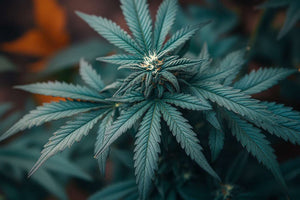For plants, water and sunlight are essential, but to ensure plants grow well, nutrients are also a critical factor. Let’s take a look at what nutrients marijuana needs to grow properly or even thrive.
1.Marijuana Nutrients

The nutrients that marijuana requires can be divided into two categories: macronutrients and micronutrients.
1)Macronutrients
The main macronutrients can be summarized by one word: NPK—Nitrogen (N), Phosphorus (P), and Potassium (K).
- Nitrogen (N): Nitrogen is essential for the leaves and stems of marijuana to grow green and strong. Without it, the lower leaves of your marijuana plant will turn yellow early on, while newly sprouted leaves will remain green.
- Phosphorus (P): Phosphorus plays a major role in helping the plant develop more roots and flowers, which enables it to absorb more nutrients. A lack of phosphorus will limit the growth of marijuana, causing it to grow slowly and possibly turn its leaves purple.
- Potassium (K): Potassium boosts the plant's resistance and increases bud yield. Without enough potassium, plants can become weak, with leaf edges turning brown and curling. The leaves may also turn yellow from the tips to the center.
So, still think NPK isn't important?
If you ignore these three elements, don’t be surprised if your plants end up lifeless on the ground.
2)Micronutrients
You might think, "If NPK is so important, do I really need to care about other so-called 'micronutrients'?"
Absolutely! Even though micronutrients are needed in smaller amounts, they still play a crucial role in the health of the plant. The main micronutrients include calcium, magnesium, and iron.
- Calcium: Don’t think calcium is only related to human bones. It's also essential for the cellular structure of plants. It strengthens the plant's cells, making it healthier, and helps promote root development. Plants lacking calcium may have poorly developed root systems and deformed leaves.
- Magnesium: Magnesium is a key component of chlorophyll. Without it, photosynthesis suffers. Remember those yellowing leaves? That’s often caused by a magnesium deficiency.
- Iron: Iron helps plants produce chlorophyll and also aids in oxygen transport. If your plant is growing slowly and its leaves are yellowing, it could be an iron deficiency.
Micronutrients may not be as obvious as NPK, but without them, your plants won’t grow healthy either.
2.Do Marijuana Plants Need Different Nutrients at Different Stages?

Yes, marijuana plants require different nutrients at different stages of growth. During the vegetative stage, they need more nitrogen, while during the flowering stage, they need more phosphorus and potassium.
- Seedling Stage: Nutrient needs are minimal at this stage. When growing in soil, no additional nutrients are usually required. However, if the plant shows signs of slow growth or poor root development, you can use seedling nutrients to promote growth.
- Vegetative Stage: During this phase, marijuana enters a rapid growth period. If you want the plant to grow tall and strong, it will need plenty of nitrogen, phosphorus, and potassium. Choose fertilizers with a high nitrogen content, with an NPK ratio of 2:1:1 or 3:1:2. You can start adding nutrients to the plants around the third week.
-
Flowering Stage: Once in the flowering stage, to promote flower development, you’ll need to reduce nitrogen and increase phosphorus and potassium. Use fertilizers with a high phosphorus and potassium content, with an NPK ratio of 1:3:4. You can start fertilizing in the early flowering phase, around the 5th to 6th week.
3.How to Tell If Your Plant Has Too Much or Too Little Nutrients?
- Nutrient Overload: Yellowing, curling, or browning of leaf tips and even spotting on the leaves. If leaves begin to curl at the edges during the vegetative stage, it could indicate excess nitrogen.
- Nutrient Deficiency: Slow growth, yellowing leaves, or leaf drop could indicate a lack of nitrogen, phosphorus, or potassium. Specific symptoms of deficiencies were mentioned above.
To avoid these issues, start with low-concentration fertilizers and gradually increase the amount. Regularly observe the plant’s condition and adjust nutrient levels as necessary.
4.Conclusion
The growth of marijuana plants goes through several stages, and each stage requires different nutrients. As a grower, you must carefully monitor the plant’s growth and adjust the nutrient formula accordingly. By providing the right nutrients at the right time, you’ll grow healthy plants with higher yields.

